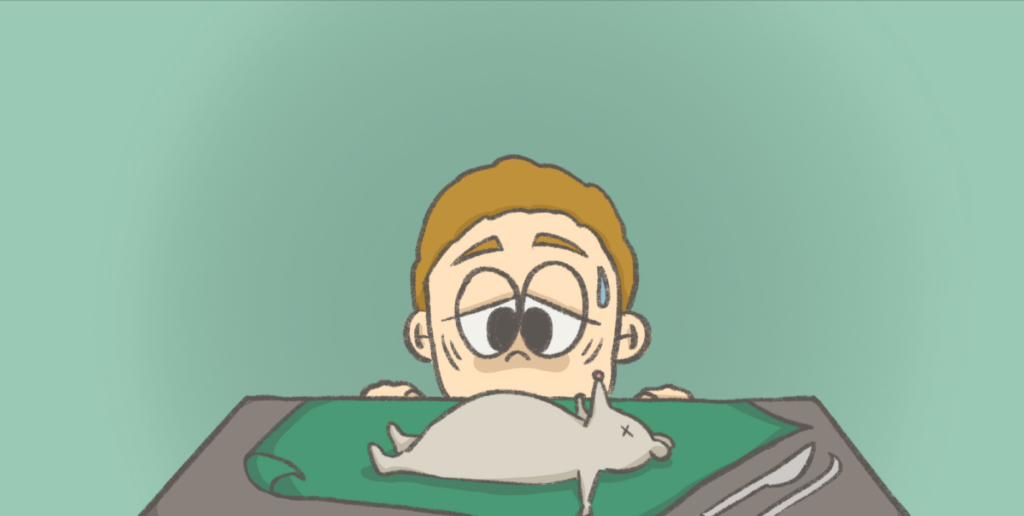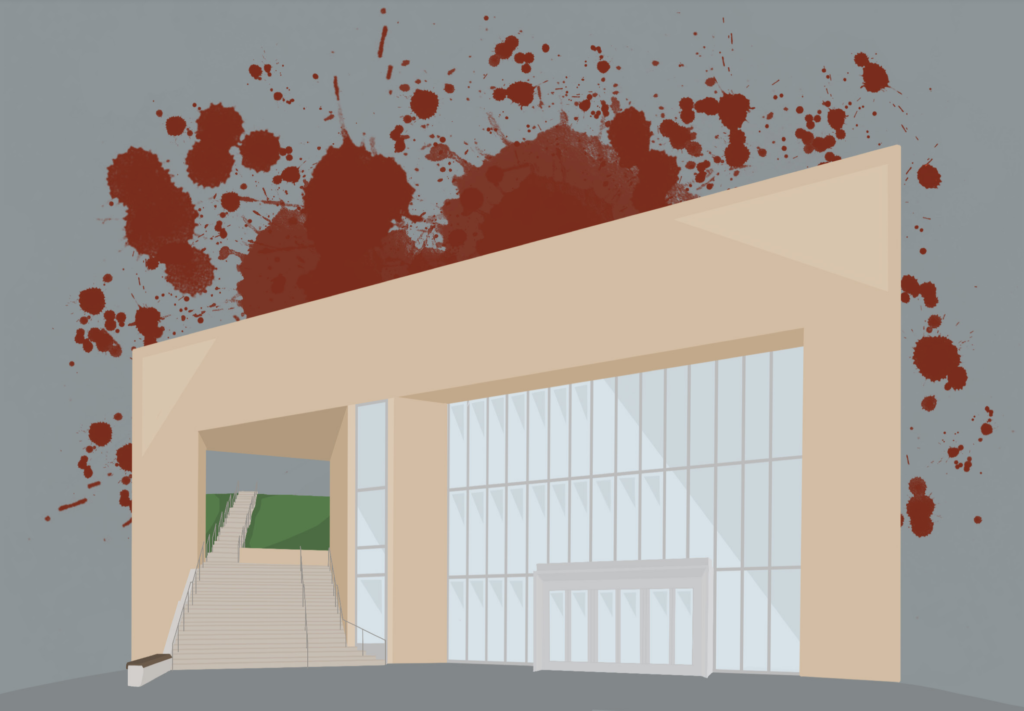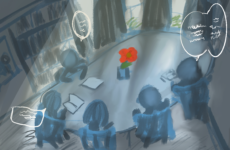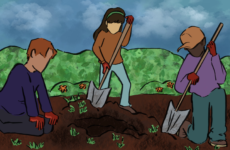
Graphic by Leah Han’27/The Choate News
By Ava Hult-Falk ’27
Within the hallowed halls of scientific academia, among the buzz of eager minds and the scent of formaldehyde, lies a controversial learning practice: dissections. Having engaged in these hands-on explorations of anatomical structures myself, I can attest to their importance as a longstanding component of scientific education.
Far from being morally reprehensible, dissections serve as a crucial tool in pioneering breakthroughs in the medical world, benefiting both humans and animals alike. Choate must acknowledge these crucial benefits, while also considering dissections’ drawbacks, to responsibly cement them in science curriculums.
There is no denying the profound impact that dissections have on shaping the minds of future scientists and medical professionals at Choate. Despite facing ethical scrutiny, dissecting animal specimens remains indispensable and irreplicable in advancing students’ understanding of anatomy and physiology.
By providing students with hands-on opportunities for anatomical exploration, dissections offer a tangible means to comprehend biological structures. Tatum Kent ’24, who has taken four courses at Choate involving dissections, remarked that her most significant lesson from the practice was the stark contrast between textbook diagrams and the actual layout of a specimen’s body. “What you learn on a diagram is so incredibly different from what is actually the layout and organization of structures in the body,” Kent said.
Having personally conducted a chicken dissection in a science lab, I, too, was provided with photos and illustrations to prepare. However, after making the initial incision, I was shocked by the discrepancies and differences between the real-life chicken and what I’d seen on a diagram. There is simply no substitute for this hands-on learning experience.
It’s important to recognize that there are certain minor drawbacks to dissections that still warrant our attention. Firstly, it is undeniable that dissections involve a sacrifice of life. As humans, we must acknowledge the ethical responsibility inherent in ending an animal’s life for educational purposes. With this in mind, it is crucial to ethically source specimens and ensures dignified disposal of animal remains.
Additionally, dissections can be unsettling, particularly for first-timers. Cutting into an animal is a weighty undertaking, and teachers or administrators must ensure that students are adequately prepared for and supported throughout the process. This can be achieved through compulsory briefing sessions outlining dissection expectations and goals to create a sense of preparedness before students’ inaugural incisions.
Some students may be opposed to dissections and aim to opt out following information sessions. However, if a student enrolls in a class that includes dissections, they should be expected to participate or remain in the classroom in observance. Without experiencing the dissection, they will fall behind in the class and lack a proper understanding of the content.
Despite these downsides, the importance of dissections in advancing students’ scientific knowledge cannot be overstated. When approached responsibly and thoughtfully, they are essential tools for furthering our understanding of anatomy and physiology, making them an indispensable practice in Choate classrooms.




